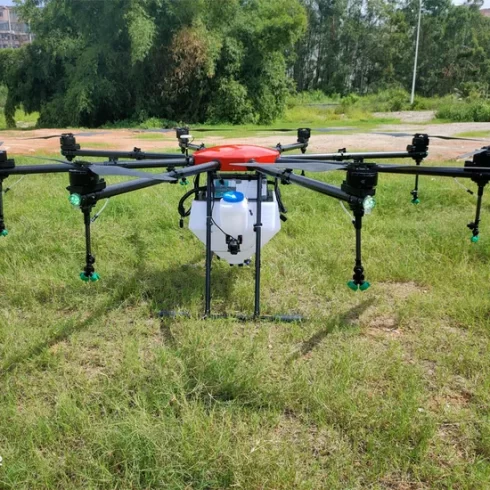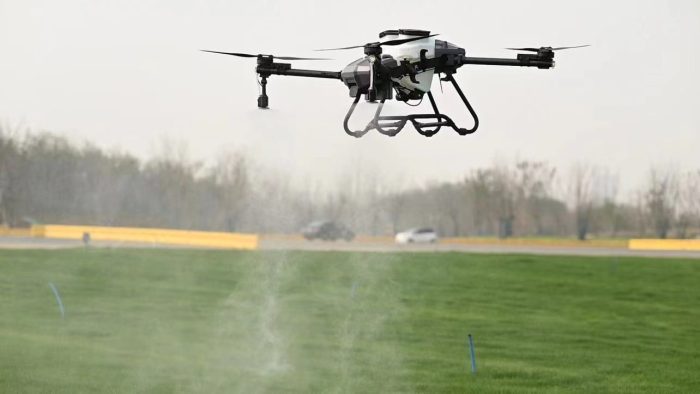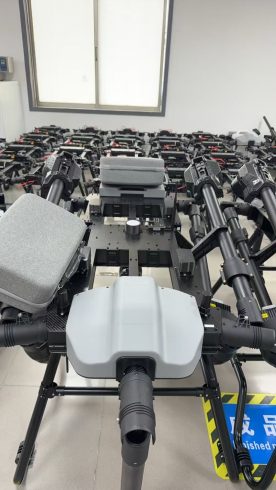![图片[1]-High-Payload Agricultural Drones: Powering Large-Scale Precision Farming-msoen](https://www.msoen.com/wp-content/uploads/2025/04/3ea0601715184639-1024x768.jpg)
Introduction
For large farms and agribusinesses, efficiency and coverage are paramount. High-payload agricultural drones deliver the capacity and endurance needed to service extensive fields in fewer flights. By carrying larger volumes of spray solution or seed, these UAVs reduce downtime, cut labor costs, and accelerate your crop-management cycle.
What Is a High-Payload Agricultural Drone?
A high-payload agricultural drone is designed with reinforced airframes and powerful motors to support tanks ranging from 25 L to over 40 L. Unlike smaller sprayers, they:
- Fly longer missions without reloading
- Cover wider spray swaths per pass
- Maintain stable flight with heavier loads
Core Advantages
- Extended Flight Time
With bigger batteries and streamlined design, high-payload drones can stay airborne 30–45 minutes, covering more acres per sortie. - Larger Spray Capacity
Tanks of 25–40 L let you treat up to 80 acres a day per drone, minimizing refill stops. - Reduced Labor & Fuel
One UAV replaces multiple tractor runs or backpack sprayers, slashing manpower and fuel usage. - Uniform Application
Wider booms (up to 8 m) and precision nozzles ensure consistent droplet size and coverage. - Robust Construction
Reinforced frames and high-torque motors handle rugged terrain, strong winds, and heavy loads.
Key Features to Evaluate
| Feature | Why It Matters |
|---|---|
| Tank Volume | Directly impacts coverage per flight. |
| Spray Width | Wider booms lower flight lines and overlap. |
| Battery & Power System | Higher capacity extends mission duration. |
| Frame Durability | Weatherproof & corrosion-resistant materials. |
| Flight Control | RTK-GPS for precise route repeats under load. |
| Safety Systems | Emergency landing & overload protection built in. |
Applications
- Row Crops (Corn, Soybean, Wheat): Rapid treatment of vast fields
- Orchards & Plantations: Under-canopy spraying in one pass
- Large-Scale Reforestation: Aerial seed dispersal over miles of terrain
- Fertilizer & Soil Treatments: Bulk application in preseason preparation
Buying Guide for High-Payload Drones
- Assess Your Acreage
Match tank and battery specs to your daily treatment goals. - Check Local UAV Regulations
Ensure compliance for heavy-lift drones operating beyond visual line of sight. - Evaluate After-Sales Support
Heavy-duty systems need robust maintenance and spare-parts networks. - Compare Total Cost of Ownership
Include batteries, nozzles, spare frames, and software subscriptions. - Request Field Demonstrations
Watch loaded-drone flights in conditions similar to your farm.
Best Practices
- Optimize Load & Flight Paths: Balance tank fill level against battery drain for maximum area coverage.
- Pre-Flight Inspections: Heavier drones demand closer checks of motors, propellers, and frame joints.
- Weather Monitoring: Avoid gusty conditions that compromise stability under load.
- Scheduled Maintenance: Track flight hours and load cycles to replace parts before failure.
Conclusion
High-payload agricultural drones redefine productivity for large-scale operations. With extended flight times, massive tank capacities, and rugged designs, they streamline crop spraying, seeding, and soil treatment—helping agribusinesses achieve higher yields with fewer resources. Investing in the right high-payload UAV unlocks new levels of efficiency, safety, and sustainability for your farm.










暂无评论内容